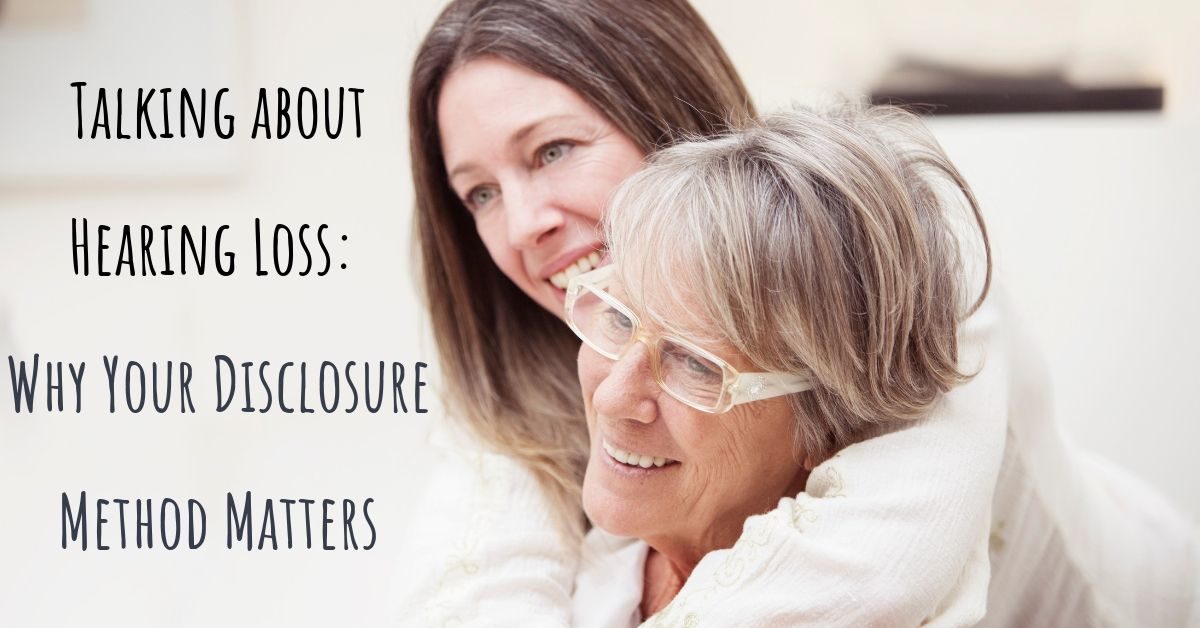- Common Hearing Aid Problems & How to Fix Them - June 14, 2021
- Why People Avoid Treating Hearing Loss — and Why You Should Schedule a Hearing Test! - May 21, 2021
- Common Hearing Aid Problems & How to Fix Them - May 14, 2021
If you have hearing loss, the easiest thing to do is to keep the it to yourself, silently struggling and preventing yourself from taking action on it. But this technique will easily open you up to long-term hearing loss-related conditions such as social isolation, depression, and dementia.
Instead, discussing your experience with friends and family is crucial. If your family doesn’t understand you’re having a hard time hearing, they’ll assume you’re intentionally ignoring them, being rude, or starting to lose your memory.
Demystifying Hearing Loss Stigma
Disclosing your hearing loss however, is easier said than done. Our society still carries a stigma around hearing impairment. Those who fail to reveal their hearing loss to loved ones may concentrate on the comparison between their previous self and their present self — whole versus not whole or capable versus handicapped. Many individuals prefer to prevent the problem and attempt to conceal the fact that they are having a hard time hearing.
Why the stigma? Hearing loss is tied up with society’s tendency to idolize youth and ridicule older generations. Because of this, many may discover that using hearing aids to enhance hearing health makes them look “old.” Similarly, they are also afraid that wearing a hearing aid will make them look unattractive.
In order to reduce this stigma, we need to educate more. Governments, communities and individuals need to inform the general public about the challenges of hearing loss so that we can all foster an environment of understanding and inclusivity for those who are suffering. If you have hearing loss, you’re in a prime position to educate others.
Aside from informing others, it’s also in your best interest to let those around you know about your condition. And the method in which you disclose your condition will influence the quality of your communication with those around you, according to a recent study.
Types of disclosure methods
In 2015, 337 patients with hearing loss were surveyed by researchers at the Massachusetts Eye and Ear hospital to better understand the language they used with others to reveal their hearing impairment.
The researchers developed a study to collect the actual phrases used by patients to tell others that they have a hearing impairment. Author Jessica S. West, M.P.H, a Duke University sociologist, evaluated the responses of the participants and separated the responses into three main categories: non-disclosure, basic disclosure and multipurpose disclosure.
- Non-disclosure
Non-disclosure is used to define those who do not reveal their hearing loss and mask their disability using sentences often used by those with regular hearing. For instance: “I can’t hear what you’re saying. Could you speak a little louder? “This technique keeps the impairment a secret from others while also placing the burden of improved communication on the shoulders of the conversation partner.
- Basic Disclosure
Basic disclosure is used to identify those who reveal that they are suffering from hearing loss and share an explanation for their condition. For instance, an individual may say “I am partly deaf because of an ear infection that I had years ago,” or “I have had a blockage in my ear since I swam a while ago.”. Crucially however, no attempt is made to facilitate improved communication.
- Multipurpose Disclosure
This approach is used to report hearing loss and to suggest an accommodation approach as well. An individual, for example, may say, “I don’t hear from my correct ear as well. Please walk on my left side. “Or they might say,” In this loud space, I’m having difficulty hearing. Please turn the music down so I can hear you. “This technique demonstrates the existence of hearing loss, while also proposing ways to interact more easily with the other individual in the relationship.
It’s clear that multi-purpose disclosure offers the most advantages out of all three. While multi-purpose disclosure is the most revealing in terms of information, it also offers constructive advice on the best accommodations for the individual’s particular case of hearing loss.
Dr. Hear
Visit us at Dr. Hear for a hearing test after following the multipurpose disclosure method and discuss your next step towards better listening. In every step of your hearing loss journey, from the initial hearing evaluation to the selection of the perfect listening device, our qualified listening experts will be there for you to follow up appointments for fittings, maintenance and repairs. Contact us today!

